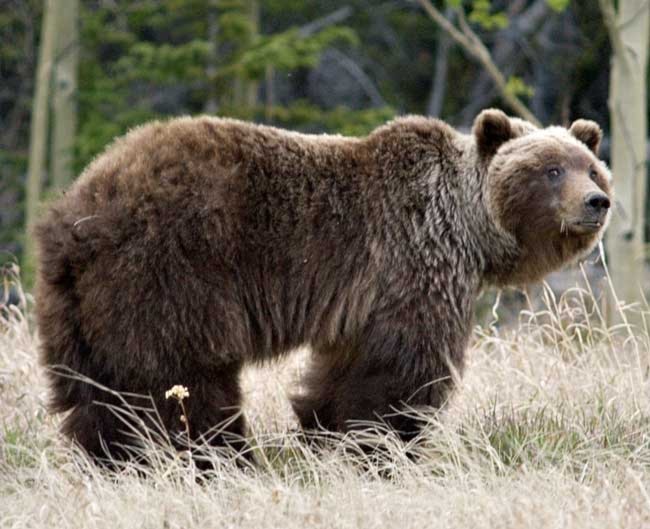Yukon’s Environment Department plans to conduct its first major study of grizzly bears in the southern Yukon, starting in June.
Nobody knows how many grizzly bears live in the Southern Lakes region, which is framed by the BC border to the south, the Alaska Highway to the east and north, and Kusawa Lake to the west.
But, because the region is in Whitehorse’s backyard, there is no shortage of conflicts between bears and people.
About two sows are shot in the region each year, either by hunters or in self-defence.
“We’re really concerned about what’s going on,” said Ramona Maraj, Yukon’s carnivore biologist.
Mature grizzlies only breed about once every four years. This makes the species more vulnerable than black bears and means even a small number of killed bears could cause a population drop.
But the only way to learn if the Southern Lakes grizzlies are in trouble is to count them. Which is easier said than done.
Maraj and her team will use a combination of helicopter darting and specially designed bear traps.
The traps are built from heavy plastic tubing. At one end is something that smells good to bears.
“Beaver meat seems to work well. Fermented beaver meat,” said conservation officer David Bakica.
When the bear sticks its paw inside the trap to fish out the food, it becomes caught in a wire noose, which is coated with rubber to prevent hurting the an- imal. The trap is anchored to a tree or something else sturdy.
Once tripped, the trap sends off a signal to alert wildlife officers that a bear’s been caught.
They hope to catch 40 bears. Estimates put the grizzly population of the region around 90.
Once caught, the bears will be measured and fitted with radio collars that allow researchers to track their movements.
The collars are designed to release themselves, or rot off, within several years, after their batteries have died.
Hunters are asked to not shoot collared bears. Besides defeating the purpose of the study, tranquilized bears are also considered unfit to be eaten for up to a year after they were caught.
The only other grizzly bear study done in the Yukon started in the territory’s North Slope in 2004 and is currently ongoing.
The Southern Lakes study is expected to cost between $150,000 to $180,000 annually and to run for five years. Each radio collar alone costs $6,000.
Contact John Thompson at
johnt@yukon-news.com.
